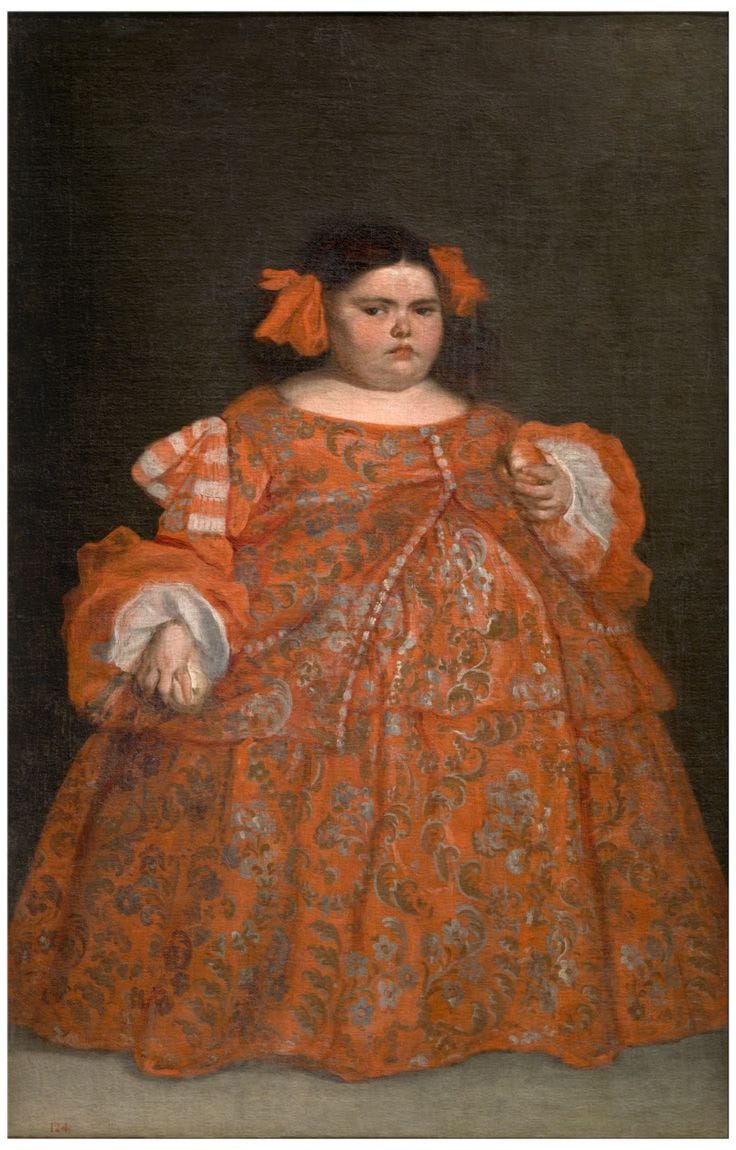
Last time we talked about Charles II of Spain, and since sooo many of you liked it, I’ve decided to take you back to the Habsburg court to talk once again about the so called “curse” of ugliness. I was absolutely outraged when I heard about Eugenia Martínez’s story, and I find it even more depressing than Charles’s.
In 1674, in the town of Bárcenas, Spain, a pregnant woman's water unexpectedly broke during a church service. With no time to leave, she gave birth right there, under the gaze of saints and the flicker of candles. This is how Eugenia Martínez Vallejo was born. Her first name, meaning "well-born," seemed very fitting. However, what awaited Eugenia was far from the grand destiny they had imagined.
As an infant, she was already described as plump. At first, her family didn’t worry; in fact, a healthy, chubby baby was often seen as a sign of well-being, prosperity, and even future fertility. However, as time went on, her growth began to accelerate rapidly. By the time she turned one, she already weighed 20 kilograms, and with each passing week, both her weight and her hunger continued to increase.
While her siblings grew up normally, Eugenia became the subject of relentless gossip and mockery in the village. Word of her unusual size spread quickly, drawing curious onlookers from neighboring towns who traveled just to catch a glimpse of the curious child. In an attempt to shield her from ridicule, her parents confined her to the house, but their efforts did little to silence the rumors. Eugenia’s strange and rapid growth soon became the talk of the town, and eventually, the entire country.
Her parents sought help from many doctors, but none could explain her condition. If she were alive today, she might be diagnosed with Prader-Willi Syndrome, a chromosomal disorder recognizable by hyperphagia (an insatiable appetite), obesity, chronic fatigue, reduced cardiovascular endurance, sometimes moderate to severe intellectual disabilities, as well as infertility. At the time, various diets were attempted to help her lose weight, but nothing worked.
The rumors about the "giant girl" living in Bárcenas eventually reached the Royal Court of King Charles II, who became curious about her. Her family, without a clear explanation, was invited to Madrid. They accepted, hoping they might find a cure for their daughter. However, what awaited Eugenia, who was six years old at the time, at the royal court was not sympathy or help.
The real motive behind the invitation was to make Eugenia a part of Charles II’s court, she would integrate a group of people who were exhibited to simply stand there. These individuals, often people with intellectual disabilities, dwarfism, or physical deformities, were kept to amuse the court during dinners and events. They were essentially treated as objects of amusement, their value tied solely to how much they could entertain.
She was immediately nicknamed la monstruosa, "the monster", and her life at court became an endless cycle of humiliation. This child was treated as a curiosity, a freak to be stared at by the nobility. This is how the royal painter Juan Carreño described her.
Her head, face, neck, and other features are the size of two men’s heads. Her body is massive, as large as two women combined, with thighs so thick and fleshy they conceal her private parts. She moves and walks with effort due to the inordinate greatness of her body, which weighs five arrobas ( about 125 pounds).
This kind of practice was very common in Europe. You can think of Nabo, the servant from Africa who belonged to wife of Louis XIV or Maria Bárbola, who appears in Las Meninas by Velázquez. It’s also known that Charles II’s father, Philip IV of Spain, kept 110 little people at his court to showcase them to visitors.
Even though they were exploited and humiliated daily, they were fed, clothed, and housed at the palace, things that many people could never even dream of having. This must be why Eugenia’s parents agreed to "give" their daughter to Charles II. I don’t blame them, they likely believed that life at court, where hunger and cold were not concerns, unlike the hardships they faced, would offer a better future for Eugenia. After all, we always want what's best for our children, don’t we?
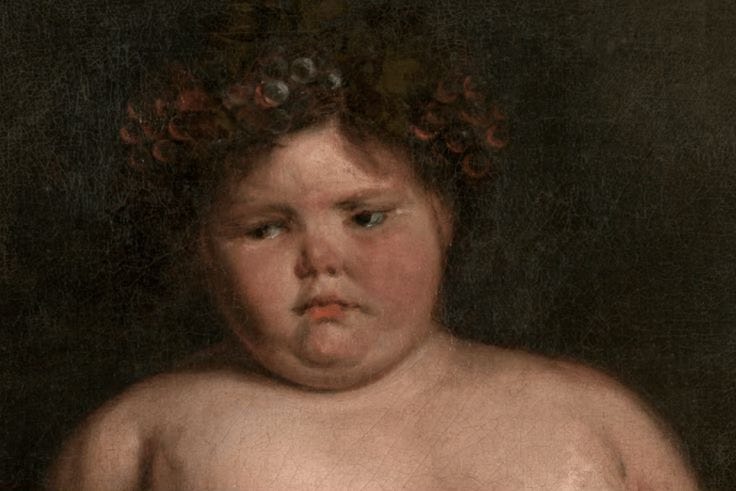
Despite her parents' intentions, her life was not really any better. Stripped of her humanity, paraded like some sort of circus attraction, reduced to an accessory for the amusement of others, how unbearably alone she must have felt, separated from her family. I can't imagine how you even begin to live with yourself when the world calls you a monster for the crime of simply existing.
The Paintings
When I first saw The Monster Clothed, I was struck by its beauty. At the time, I didn’t know anything about Eugenia’s story, nor did I realize she was a child. What captivated me was the painting’s refusal to render her appearance ugly or grotesque. In fact, her features are softened, almost dignified. Contrary to what to expect, the paintings doesn’t exaggerate her features or distort her body into something monstrous.
In the second portrait, Eugenia, who I remind you was only 6 years old was forced to pose naked and stripped from all dignity to pose like Bacchus, the Roman God of wine, festivity, and insanity.
Knowing the atrocities she might have endured at that time, her expression in both paintings lingers in my mind. There’s a sadness there that seems to capture the weight of her life. I don’t know Carreño’s intentions, but perhaps the expression he chose for her in those portraits reflects his attempt to convey the burden of being Eugenia ? You can see it in her face: discomfort, sadness, shame… I cannot imagine how she must have felt.
Eugenia Martinez died in 1699 at the age of 24, a life spent under the weight of her physicality and the gaze of a cruel society. The cause of her death remains unknown, but it is likely that it was related to the conditions she suffered from her entire life.






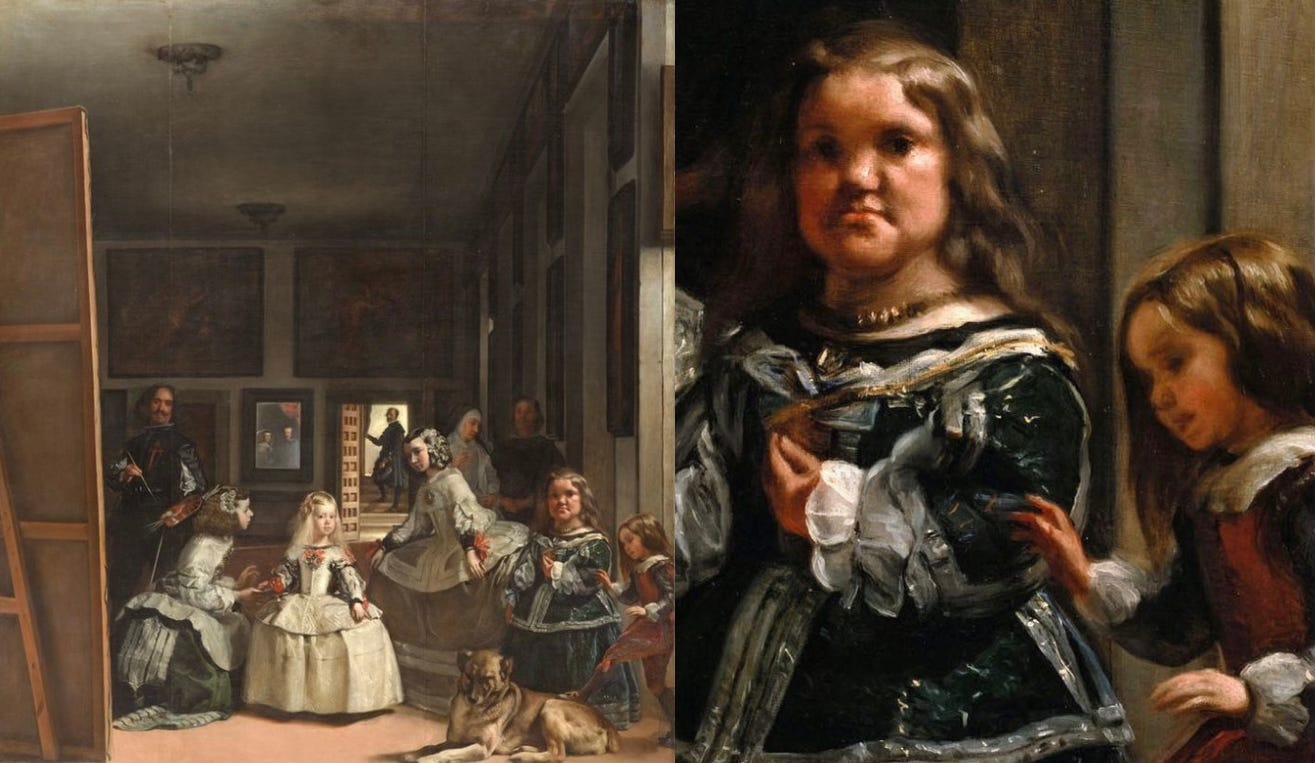
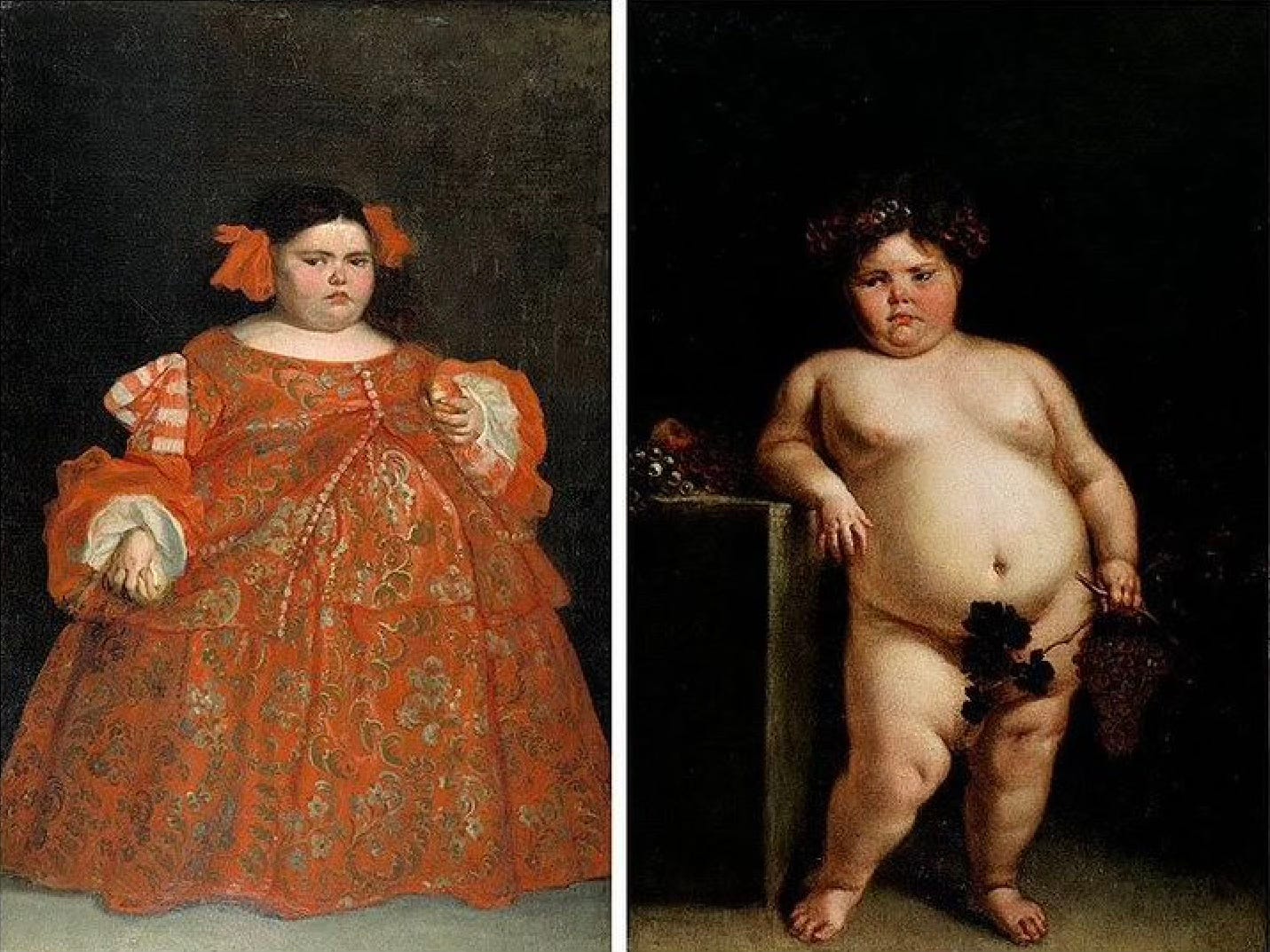
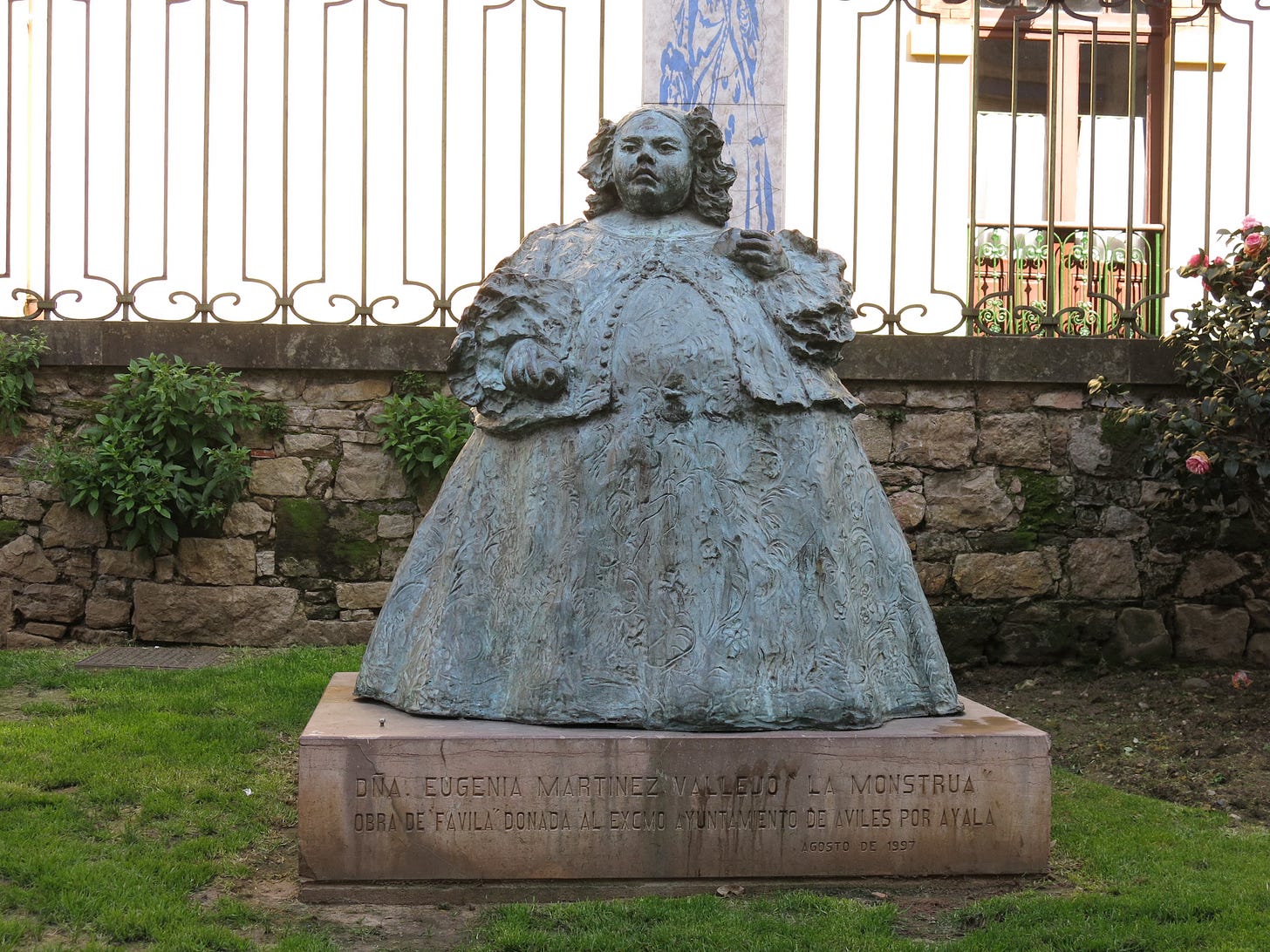
Tragic.
☹️❤️🩹